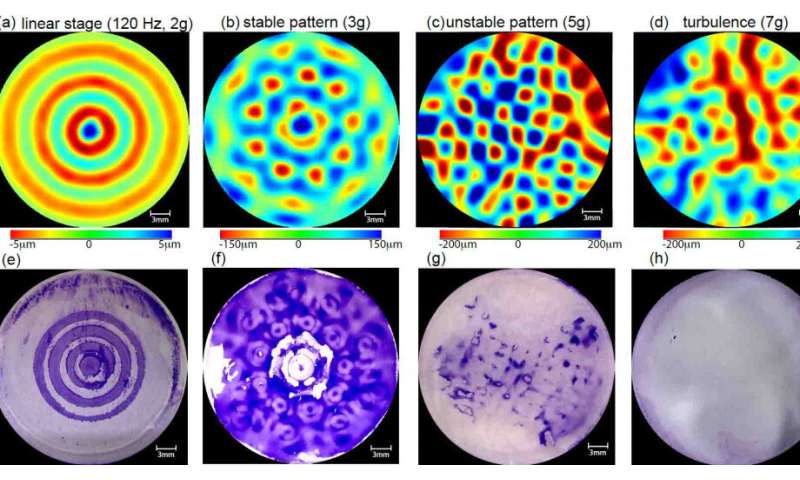Bacteria breakthrough could lead to new biomaterials
by Science X staff
Physicists at the Australian National University (ANU) have found a way to manipulate the growth of bacterial biofilms—one of the most abundant forms of life on earth.
The breakthrough could help improve how we deal with chronic infections and antibiotic resistance, as well as the food we eat and the clothes we wear.
Lead researcher Dr. Hua Xia says scientists have been trying to understand and control biofilms for decades.
"They're formed by the bacteria to create a safe environment, acting as a sort of shield from danger," Dr. Xia said.
"For example, dental plaque is a common example of a biofilm. Outside our bodies, pond scum is another example. They thrive on moist or wet surfaces.
"But they're not necessarily harmful to people. In wastewater treatment plants and agricultural technology, we utilise the ability of bacteria to form biofilms."
The research team have developed a new approach to controlling biofilm formation.
"Formation starts when the bacteria attach to the right type of surface," Dr. Xia said.
"By controlling surface waves we were able to control the growth of biofilms.
"To add to this, we found turbulent motion discouraged the attachment of bacteria and biofilm formation."
This way of controlling the way bacteria behaves could lead to new technology in the biomaterials field.
"The wave action is strongest at the liquid-air interface, where some microorganisms form a compound called bacterial cellulose," Dr. Xia said.
"This wave-based approach could help engineer new forms of bacterial cellulose, which is used for everything from textiles, cosmetics and food products, as well as in the medical field.
"We're now focused on creating various cellulose forms, and controlling its properties—such as its water holding capacity or mechanical strength."
The research has been published in Science Advances.
More information: Sung-Ha Hong et al. Surface waves control bacterial attachment and formation of biofilms in thin layers, Science Advances (2020). DOI: 10.1126/sciadv.aaz9386
Journal information: Science Advances
Provided by Australian National University